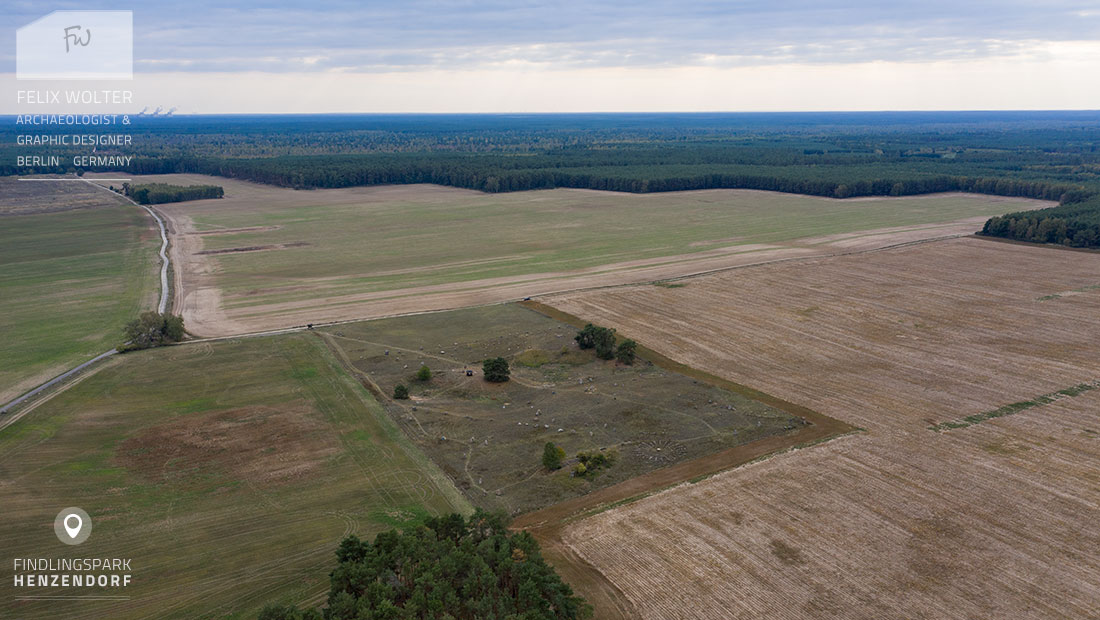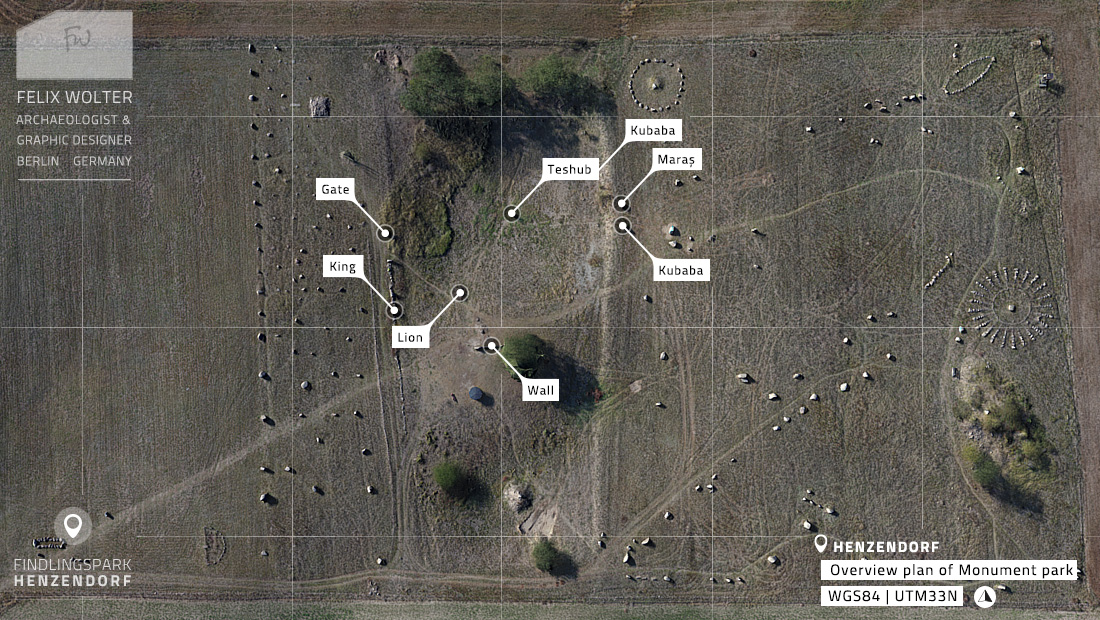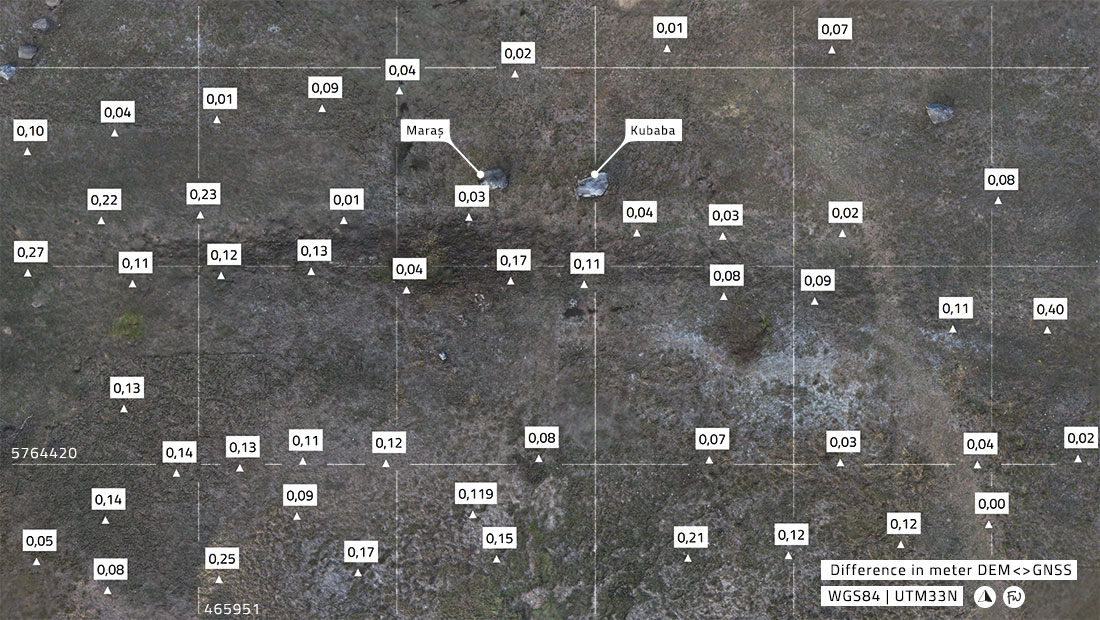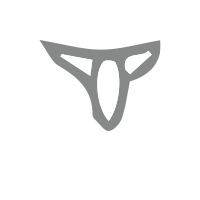The "Findlingspark Henzendorf" lays close to the polish-german border in the beautiful Schlaubetal (Brandenburg/Germany). By a cooperation art project of polish and german artists (Ulrich Thiel, Kazimierz Krewniak and Adam Sobiraj) many Ice Age erratic boulders were reliefed with celtic and anatolian motives.
With the generous permission of the local landcare association, the land owner and the local nature conservation authority the Henzendorf Monument Park and chosen statues were 3D-documented by drone imagery and detailed hand-held photogrammetry. The high amount of detail of the rock art object and the rolling landscape offered a ideal testing scenario to apply a photogrammetric surveying workflow. All presented 3D-models show statues which are based on motives from Iron Age Anatolia. The originals belong to the so-called Neo-Hittite artistic tradition and stem from different archaeological sites from the Ancient Near East (today Syria, Iraq and Turkey).
The "Findlingspark Henzendorf" can be visited all year round for free, more Information can be found on the Website of the Schlaubetal Nature Park.
For the mapping of the Findlungspark Henzendorf, 375 drone images were used to generate a high-resolution map of the area. The imagery was post-processed and the result was referenced by 25 GNSS-measured Ground Control Points and checked with 10 GNSS-measured Check Marks. Furthermore the drone based Digital Elevation Model was compared to a second DEM based on a traditional topographic survey, surveyed with a JAVAD Base-Rover GNSS Setup .




 Teshub Cult Stele
Teshub Cult Stele
A stele depicting the hittite God Teshub. The original object (Neo-Hittite, circa 1,180 BC - 700 BC) was found 1899 in Babylon (Iraq).
Further reading:
- Storm God Stele | hittitemonuments.com
- R. Koldewey. Die Hettitische Inschrift (...), WVDOG, Heft 1; 1900.
- A. Muhibbe Darga. Hitit Sanatı. İstanbul: Akbank, 1992: Fig. 312; P. 329
Original at: Eski Şark Eserleri Müzesi (Istanbul), GNT.S03.01.sld.01
 Kubaba Stele
Kubaba Stele
A stele depicting the seated Hittite Goddess Kubaba. The original object (Neo-Hittite, circa 1,180 BC - 700 BC) was found at Carchemish (Turkey).
Further reading:
- Goddess Kubaba | hittitemonuments.com
- A. Muhibbe Darga. Hitit Sanatı. İstanbul: Akbank, 1992: Fig. 250; P. 242
- K. Bittel, Die Hethiter. (...), München: Verlag C.H. Beck, 1976
Original at: Anatolian Civilizations Museum (Ankara)
 Maraş Stele
Maraş Stele
A stele depicting a seated female figure in front of a dining table. With her right hand she is pulling a thread from the spindle that she hold in her left hand. The original model (~ 825 BC - 700 BC) was found at Gurgum (Turkey).
Further reading:
- Maraş Stele | hittitemonuments.com
- D. Bonatz, Syro-hethitische Grabdenkmal, Mainz: Zabern, 2000. (C 51)
- K. Bittel, Die Hethiter. (...), München: Verlag C.H. Beck, 1976
Original at: Adana Archaeology Museum (Adana)
 Herald`s Wall
Herald`s Wall
This wall with three orthostats draws inspiration fom the Herald`s Wall in Carchemish (Turkey) on the west bank of the upper Euphrates. The orthostat on the very left is a close copy of the "Double Headed Sphinx" (950-850 BCE) from this site, where is part of a longer orthostat alley.
Further reading:
- A. Muhibbe Darga. Hitit Sanatı. İstanbul: Akbank, 1992: Fig. 252; P. 244
- A. Gilibert, Syro-Hittite monumental art (...) Berlin:Topoi, 2011
- L. Woolley, Carchemish (...), London, 1914: Pl. B. 14 a
Original at: Anatolian Civilizations Museum (Ankara)
 Gate Lion
Gate Lion
This gate lion is a scaled-down copy of a statue found in the Lion Gate of Arslantepe (Turkey). The original is on display today at the Anatolian Civilizations Museum in Ankara and on the site.
Further reading:
- Arslantepe | hittitemonuments.com
- Arslantepe Website
- K. Bittel, Die Hethiter. (...), München: Verlag C.H. Beck, 1976
Original at: Anatolian Civilizations Museum (Ankara)
 Kings`s Gate
Kings`s Gate
This stele depicts a Hittite warrior, based on a orthostat in Kings`s gate of the Hittite capital Hattuša (Boğazköy) a UNESCO World Heritage Site in Turkey. Further reading: - Hattuša | hittitemonuments.com - Hattuša | German Archaeological Institute [de] - K. Bittel, Die Hethiter. (...), München: Verlag C.H. Beck, 1976 Original at: Anatolian Civilizations Museum (Ankara)
 Tuthalija IV
Tuthalija IV
A interpretation of an rock relief depicting the Great King Tudḫaliya IV (13th century BC) from the Hittite sanctuary Yazılıkaya (Turkey). The original is heavily weathered, so this statue is a artistic reconstruction of the Hittite motive. The ensemble of Yazılıkaya is part of an ensemble of temples and burial places near the Hittite capital Hattuša. Further reading: - Yazılıkaya | hittitemonuments.com - Yazılıkaya Reconstruction | Luwian Studies [youtube] Original at: Yazılıkaya (Turkey)
This statue is not from the Neo-Hittite collection of the Monumental Park Henzendorf. As the goal of the exhibition is to express cultural interactions across regions and cultures, many other statues cite celtic, germanic and other cultural traditions in an artistic interpretation by the artists Ulrich Thiel, Kazimierz Krewniak and Adam Sobiraj. Further reading: - Findlingspark Henzendorf | tagesspiegel.de [de] - Findlingspark Henzendorf | Wikipedia [de] - Schlaubetal Nature Park | Website